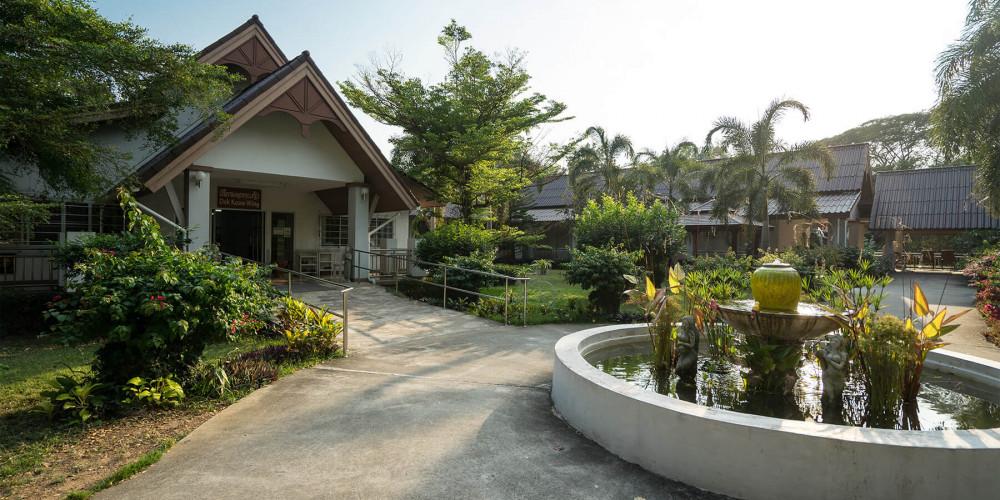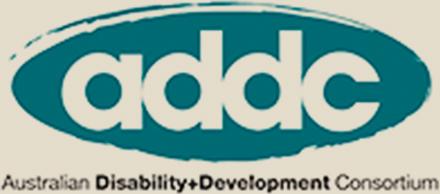KIT Blog
110 years of service in Thailand, thanks to your support
-
 The Leprosy Mission Australia
The Leprosy Mission Australia
- Apr 24, 2017
- Uncategorized
McKean Rehabilitation Center is in Chiang Mai in northern Thailand. It provides treatment and rehabilitation for leprosy patients and people with disabilities. Next year will mark 110 years of service.
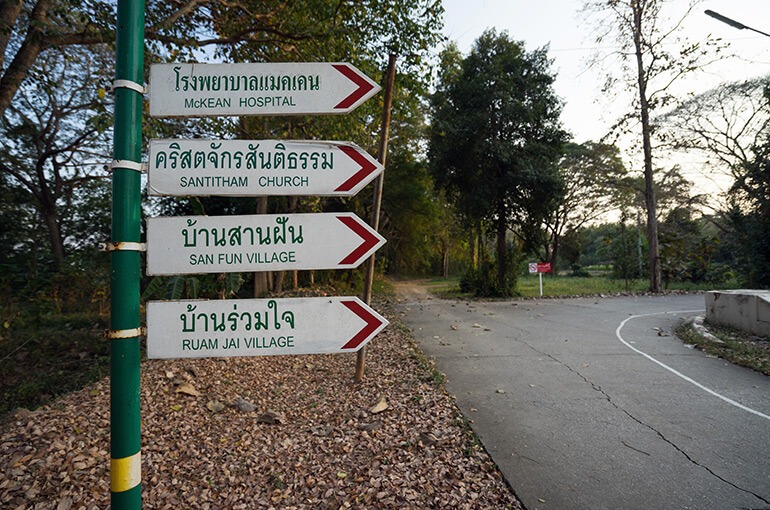 Pointing the way to the McKean Rehabilitation Center, Chiang Mai | Photo by Daniel Christianz
Pointing the way to the McKean Rehabilitation Center, Chiang Mai | Photo by Daniel Christianz
 Dr James W McKean (1860-1947), the McKean Rehabilitation Center’s founder, commemorated with this statue | Photo by Daniel Christianz
Dr James W McKean (1860-1947), the McKean Rehabilitation Center’s founder, commemorated with this statue | Photo by Daniel Christianz
In 1907, the conditions of people affected by leprosy in Thailand confronted an American missionary, Dr James W. McKean. He petitioned the ruler of Chiang Mai for an island, founding a leprosy colony in 1908.
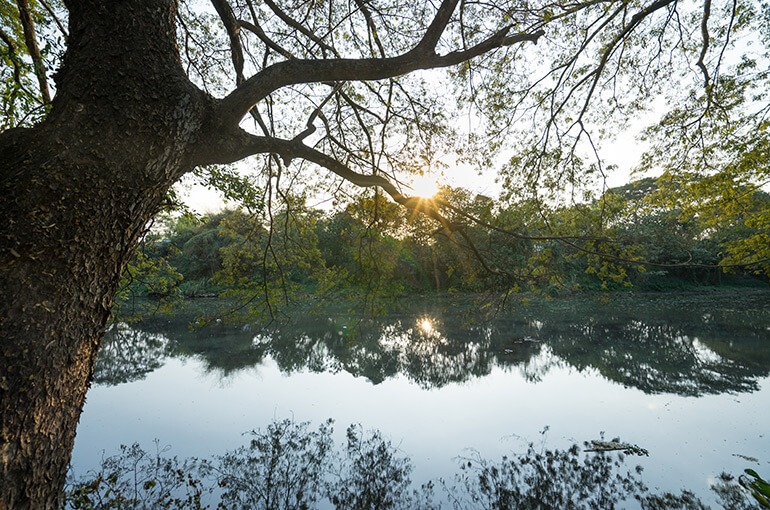 The Ping Ping River from the banks of the McKean Rehabilitation Center | Photo by Daniel Christianz
The Ping Ping River from the banks of the McKean Rehabilitation Center | Photo by Daniel Christianz
Over the next three decades, people affected by leprosy made their way to the settlement. Some walked from China, Laos and Burma. There was no effective cure available at the time. Patients were instead given support, community, food and an opportunity to develop a Christian faith to sustain their hope. A small Bible school would later give patients an opportunity to study. They held jobs in agriculture, healthcare, trades and even law enforcement to support the growing colony. Children on the island obtained an education from two schools. One was reserved for healthy children of leprosy affected parents, the other for children with leprosy. In the 1960s there was over 2,000 children studying at the school for healthy children. Thousands of children obtained an education through these schools. Improvements to treatment were made after World War 2 and some were cured. Former McKean patients moved around the country and founded farms, health posts and new churches. In total, 22 resettlement villages were founded in Thailand’s north because of McKean.
By the 1970s, the World Health Organisation was promoting rehabilitation and integration for people affected by leprosy. Within 15 years McKean would no longer be a leprosy colony. McKean founded five out-patient clinics around the country so that newly diagnosed people could stay at home while taking treatment. It renewed its efforts to educate the public, dispelling superstitions and myths around leprosy. Education helped people get help as soon as they discovered the earliest signs. This early diagnosis and early treatment ultimately prevented permanent disability in many patients. Some residents of the colony required extensive rehabilitation. Some needed cosmetic surgery to fix collapsed noses. Some required reconstructive surgery to return dexterity to their hands. Some required vocational training to help them build an independent and sustainable livelihood. For others, returning to their hometowns was impossible or unsafe. These patients became permanent residents and thirty are supported at McKean to this day.
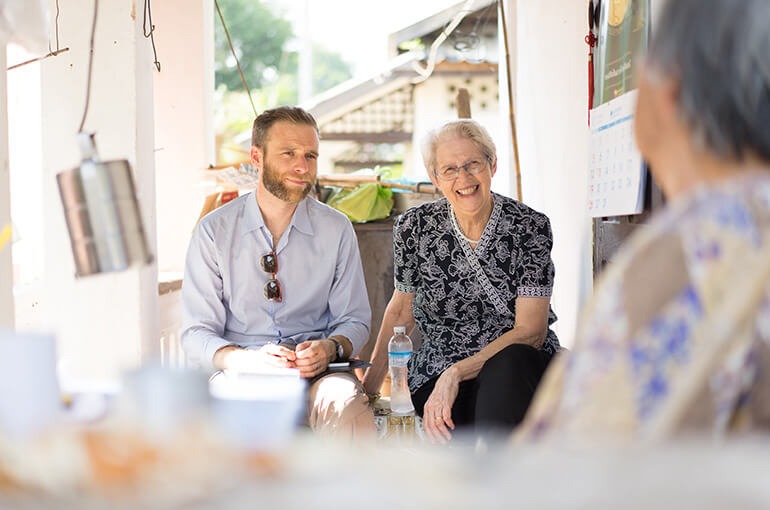 The Leprosy Mission Australia’s James Montgomary and the McKean Rehabilitation Center’s Heather Smith talk with a resident | Photo by Daniel Christianz
The Leprosy Mission Australia’s James Montgomary and the McKean Rehabilitation Center’s Heather Smith talk with a resident | Photo by Daniel Christianz
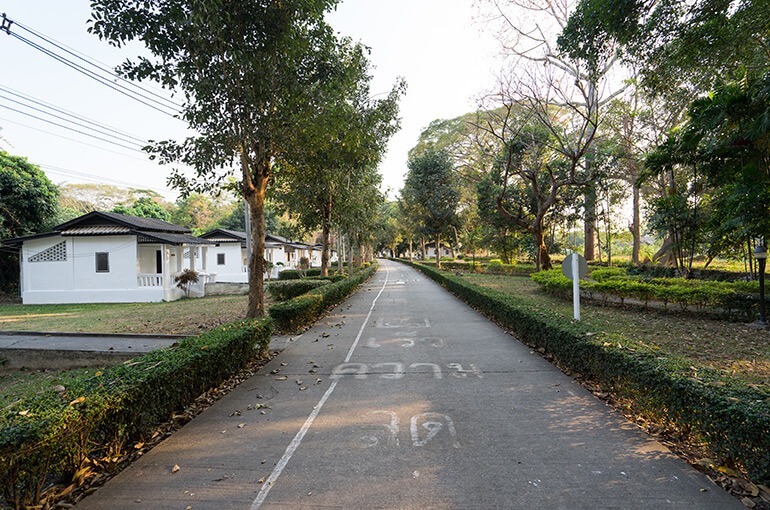 The picturesque streets at the McKean Rehabilitation Center draw new residents seeking aged care from around the world | Photo by Daniel Christianz
The picturesque streets at the McKean Rehabilitation Center draw new residents seeking aged care from around the world | Photo by Daniel Christianz
Residents affected by leprosy and disability support themselves by creating crafts for sale. You can buy these at our shop.
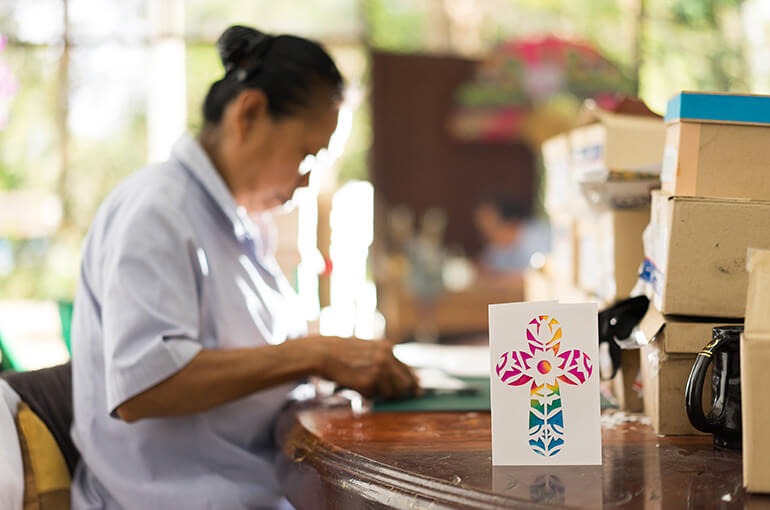 Sangwan cuts out her cards in the Handicraft workroom | Photo by Daniel Christianz
Sangwan cuts out her cards in the Handicraft workroom | Photo by Daniel Christianz
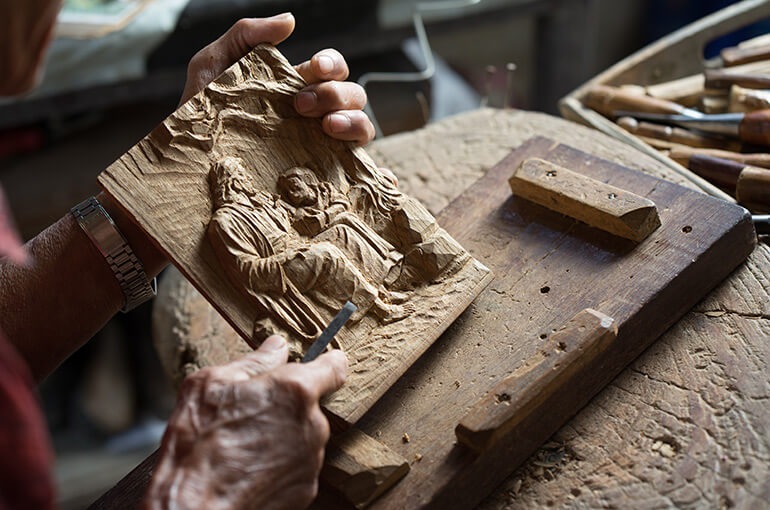 Patana carves scenes, often from Christian stories, into wood; a skill he was taught by another patient at the McKean Rehabilitation Center | Photo by Daniel Christianz
Patana carves scenes, often from Christian stories, into wood; a skill he was taught by another patient at the McKean Rehabilitation Center | Photo by Daniel Christianz
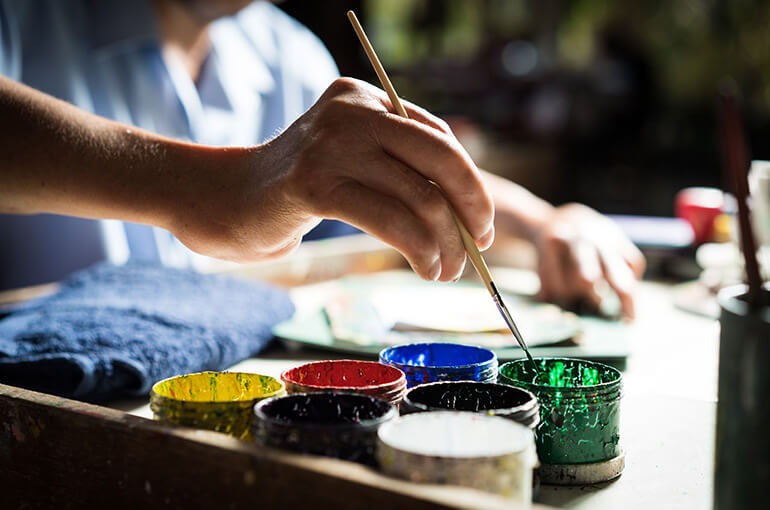 Sunthorn paints at the McKean Rehabilitation Center | Photo by Daniel Christianz
Sunthorn paints at the McKean Rehabilitation Center | Photo by Daniel Christianz
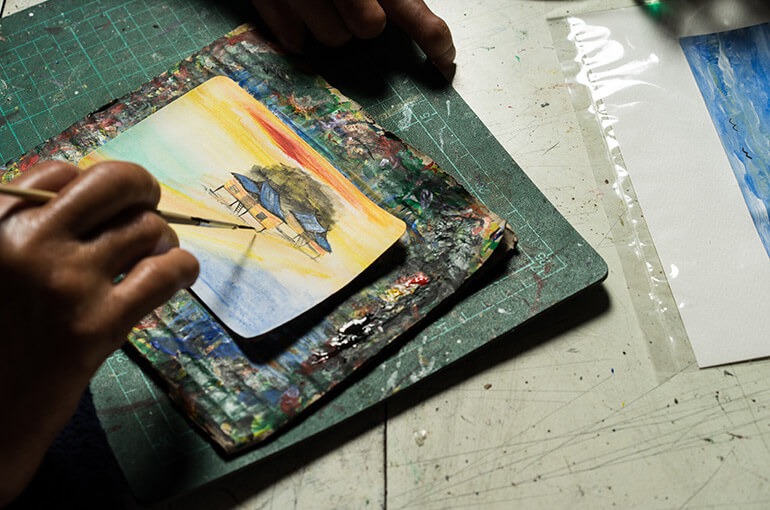 Sunthorn paints iconic Thai scenes | Photo by Daniel Christianz
Sunthorn paints iconic Thai scenes | Photo by Daniel Christianz
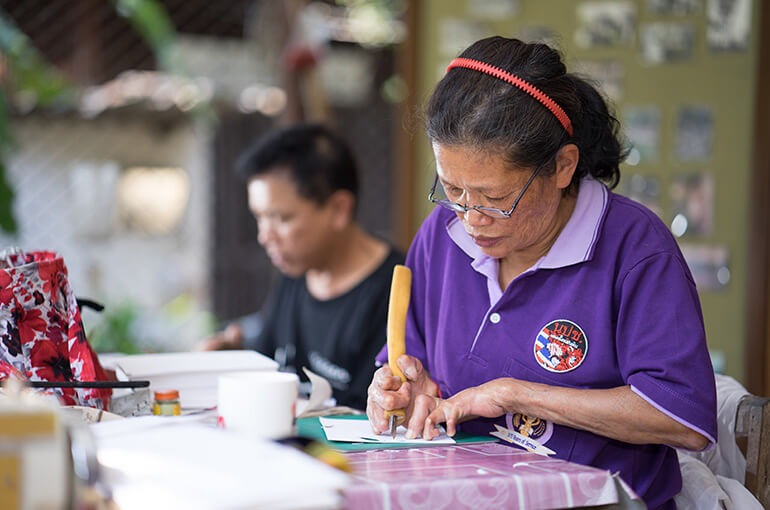 Rabiap cuts out her intricately designed cards | Photo by Daniel Christianz
Rabiap cuts out her intricately designed cards | Photo by Daniel Christianz
The McKean Rehabilitation Center continues to serve disadvantaged and marginalised people in Thailand because of your support. Thank you for your support. You’re making a powerful difference to people affected by leprosy and with disability in Thailand, through the McKean Rehabilitation Center.
